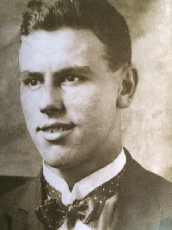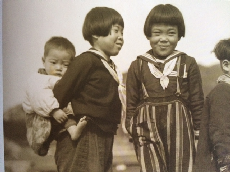Hugh Bull


Hugh Bull was the first full-time photographer appointed at the Melbourne Age, a position he held for thirty one years after he commenced in 1927. While working for the newspaper, he fathered a dynasty of press photographers, and some of his grandchildren continue to work in the industry. Son Dennis worked most of his life at the Age as a press photographer, Ken was a photo-engraver at the Age a craft which all but disappeared with technology advances, and before his retirement Geoff was a press photographer at the Melbourne Sun News Pictorial. Dennis’s son Colin enjoyed a long career as a photographer at the Sun and his other son, Peter, worked at the Australian before pursuing a freelance career.
Originally from Wales, Bull served for three years in France during World War 1, twice receiving shrapnel wounds and suffering exposure from mustard gas. He returned home and went to work in the darkroom at the Daily Graphic newspaper in London. With the arrival of the Great Depression, most of the staff, including Bull were laid off. He received no payout, but was allowed to keep his camera gear. Encouraged by his father to emigrate to Australia, Hugh Bull, his wife Winifred (pregnant with Ken) and young son Dennis travelled to Australia with little more than his Speed Graphic camera to their name.
Three days after arriving in Melbourne, Bull walked into the offices of the Age claiming to have plenty of experience on Fleet Street. The Editor in Chief asked if he had his own gear and then put Bull on a three month probationary period. His status changed to full time after he demonstrated his worth at the races one day. It was a particularly foul Melbourne day and Bull, along with other photographers sent to cover the meeting, was confronted with limited visibility that made photographing the event challenging. While Bull’s peers aimed their cameras and tried to take shots he panned his camera in time with the horses passing by. He was the only photographer to return with a usable image of the winning horse that day, and thus he became the Age’s first full-time photographer.
Bull was an accredited war correspondent and the first Age photographer to go to Japan at the end of World War 2. He was among the first Australian news media to be flown into a flattened Hiroshima to document the devastation wrought by the world’s first wartime atom bomb. As well as documenting the devastation, he worked hard at conveying the humanity of the Japanese people as they rebuilt their lives.
In a relatively young professional field, Hugh Bull made useful connections with other photographers outside newspapers. According to Harley Boyles, the son of commercial photographer Charles Boyles, who specialised in taking pictures of Victorian Football League players, Bull would sometimes contact his father to see if he had images that he needed:
Occasionally [Dad’s friend] Hugh Bull, who was the chief sports photographer at ‘The Age’ would arrange photo swaps with my father… It was unofficial. ‘The Age’ didn’t know. I would doubt they knew. Hughie would come to our house. Dad would ring him. ‘Have you got so-and-so’? It was informal co-operation between the two of them. Hughie was a nice bloke.
Hugh Bull passed away in his late 90s, a quiet man who was very proud of the work he did and the legacy he created.
Sources:
- Kathleen Whelan, Photography of the Age: Newspaper Photography in Australia, Brolga Publishing, Melbourne, 2014 pp 50-55.
- Trina McLellan, ‘Bull ‘mafia’ celebrates key milestone’', Reporting4Work, 4 April 2013, http://reporting4work.com.au/2013/04/04/bull-mafia-celebrates-key-milestone/
- Ken Mansell, 'Inteview with Harley Boyles 21 June 2010’, Boyles Footy Photos, http://boylesfootballphotos.net.au/article11-Interview-with-Harley-Boyles-21-Jun-2010